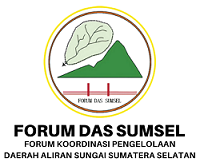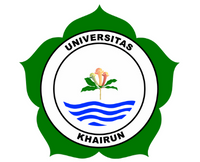Counseling on the Use of Plants as Alternative Family Medicines in Talang Jambe Village, Palembang City
Abstract
The utilization of the yard can support the provision of a variety of food at the household level, so that the family food consumption pattern is realized diverse, balanced, and safe because the management of the yard can meet the needs of household consumption, save daily expenses, and provide additional income. The yard could be used in addition to being planted with fruits, flowers, vegetables, it could also be planted with medicinal plants. Medicinal plants are planted in the yard, in addition, to be consumed as an alternative choice of family medicine that could also be an additional source of income. In addition, the medicinal plants could also be a decoration that was comfortable to look at when laid out beautifully. Family medicinal plants (TOGA) were basically a piece of land in the yard of the house that was used for plants that were efficacious as medicine in order to meet the family's need for medicines. The Food and Drug Control Agency itself determined nine excellent family medicinal plants (TOGA) that had been clinically researched and tested. The nine medicinal plants were sambiloto, guava, dutch teak, Javanese chili, temulawak, red ginger, turmeric, mengkudu, and salam. The existence of 9 types of medicinal plants needed to be socialized to the community so that they could use the plant as an alternative to family medicine needs so that it could save household income. The method of activities carried out in this community service activity was counseling by using lecture methods and using PowerPoint slide media that contains explanations about nine types of excellent family medicinal plants and by inviting the community to utilize the yard by planting TOGA. The success of this community service was judged from the target number of participants as much as 90%, the reach of the goal of 80%, the reach of the material target of 100%, and the example of the utilization of the yard at home by 80%. The conclusion of this community service was that TOGA counseling improved public knowledge and understanding about TOGA to be used as an alternative choice of family medicine from 9 clinically tested plants.
Full Text:
PDFReferences
Anonim. Sembilan Tanaman Obat Alam Indonesia yang Telah Uji Klinis. Jakarta: Herbatek; 2011.
Badan Pengawasan Obat dan Makanan Republik Indonesia. Pedoman Uji Klinik Obat Herbal. Jakarta: BPOM; 2014.
Badan Pengawasan Obat dan Makanan Republik Indonesia. Obat Bahan Alam Indonesia. Program dan Kegiatan Penelitian Tanaman Obat Indonesia. Jakarta: BP POM; 2017.
Badan Pengawas Obat dan Makanan. HalHal yang Harus Diperhatikan Dalam Penggunaan Obat Bahan Alam. Jakarta: InfoPOM; 2005.
Dalimartha, S. Atlas Tumbuhan Obat Indonesia Jilid 2. Jakarta: Penerbit Trubus Agriwidya; 2000.
Kementerian Kesehatan RI. 100 Top Tanaman Obat Indonesia. Jakarta: Badan Penelitian dan Pengembangan Kesehatan Balai Besar Penelitian dan Pengembangan Tanaman Obat dan Obat Tradisional; 2011.
Kementerian Kesehatan RI. Pedoman Penilaian Pengelolaan dan Pemanfaatan Tanaman Obat Keluarga (TOGA). Jakarta: Kemenkes RI; 2012.
DOI: https://doi.org/10.32502/altifani.v1i2.3225
Refbacks
- There are currently no refbacks.
Copyright (c) 2021 Altifani Journal: International Journal of Community Engagement
Indexed by:
Altifani Journal: International Journal of Community Engagement
Diterbitkan oleh Fakultas Pertanian, Universitas Muhammadiyah Palembang
Contact Person:
Rika Puspita Sari, M.Si (HP/WA: +62 813-7490-0341)
Klinik Publikasi Pertanian, Faculty of Agriculture, Universitas Muhamamdiyah Palembang
JL. Jend.A.Yani 13 Ulu Palembang, South Sumatra, Indonesia
Tel. (+62)711-511731; Email: kppfpump@gmail.com; Website: https://jurnal.um-palembang.ac.id/altifani

This work is licensed under a Creative Commons Attribution 4.0 International License.









.png)
14.png)





